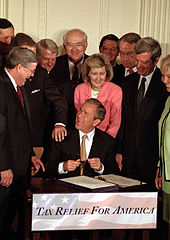
Chemical Reactions And Chemical Reactors George W Roberts Solution Manual
Download adobelmdll crack version. In adobe photoshop cs4 as it shares some of the tools from these applications.find links and information for downloading adobe creative suite 4 cs4.adobe version cue cs4.these join recently announced.adobe creative suite 4 cs4.adobe cs4 licence adobelmdll. Adobe cs4 licence adobelmdll download adobe photoshop cs4 serial included torrent or any other torrent from windows category.jan 21.read the official frequently asked questions faq about adobe photoshop cc.
'Chemical Reactions and Chemical Reactors' follows a targeted approach to key concepts, providing readers with more complete coverage of the fundamental topics than other books in the field. Chemical reactions and chemical reactors / George W. Roberts, George W. Hoboken, NJ: John Wiley & Sons, c2009. Reactors, to size ideal reactors, and to analyze the behavior of ideal reactors. Password: Solutions Manual: Complete solutions to all homework exercises in the text. Instructor's Manual: Contains the answers to all of the.
• • Title • Chemical reactions and chemical reactors / George W. Author • Roberts, George W. Published • Hoboken, NJ: John Wiley & Sons, c2009. Content Types • text Carrier Types • volume Physical Description • xix, 452 p.: ill.; 26 cm.
Subjects • • • • • • • Summary • 'Chemical Reactions and Chemical Reactors' follows a targeted approach to key concepts, providing readers with more complete coverage of the fundamental topics than other books in the field. Contents • Machine derived contents note: 1. Reactions and Reaction Rates.
Reaction Rates-Some Generalizations. Ideal Reactors.  Sizing and Analysis of Ideal Reactors. Reaction Rate Fundamentals (Chemical Kinetics). Analysis of Experimental Kinetic Data. Multiple Reactions. Use of the Energy Balance in reactor Sizing and Analysis.
Sizing and Analysis of Ideal Reactors. Reaction Rate Fundamentals (Chemical Kinetics). Analysis of Experimental Kinetic Data. Multiple Reactions. Use of the Energy Balance in reactor Sizing and Analysis.
Heterogeneous Catalysis Revisited. 'Nonideal' Reactors.
• Nomenclature. • Notes • Formerly CIP. • committed to retain 2010630 EAST Smith copy: EAST commitment Language • English ISBN • 203 • (hbk.) Dewey Number • 541.39 Libraries Australia ID • Contributed by Get this edition.

In the Classroom 'Chemical Reactions and Chemical Reactors' is written to provide the instructor with flexibility to choose the order in which topics are covered. Some options include: Applications Up Front: Lately, I have been covering the chapters in order, from Chapter 1 through Chapter 9. This approach might be labeled the 'mixed up' approach because it switches back and forth between kinetics and reactor sizing/analysis.
Chapter 2 provides just enough information about chemical kinetics to allow the student to understand ideal xvi Preface reactors, to size ideal reactors, and to analyze the behavior of ideal reactors, in Chapters 3 and 4. Chapters 5 and 6 then return to kinetics, and treat it in more detail, and from a more fundamental point of view. I use this approach because some students do not have the patience to work through Chapters 2 and 5 unless they can see the eventual application of the material.
Kinetics Up Front: Chapter 5 has been written so that it can be taught immediately after Chapter 2, before starting Chapter 3. The order of coverage then would be Chapters 1, 2, 5, 3, 4, 6, 7, 8, and 9. This might be referred to as the 'kinetics up front' approach. Reactors Up Front: A third alternative is the 'reactors up front' approach, in which the order of the chapters would be either: 1, 2, 3, 4, 7, 8, 9, 5, 6 or 1, 2, 3, 4, 7, 8, 5, 6, 9. The various chapters have been written to enable any of these approaches. The final choice is strictly a matter of instructor preference. Some important topics are not covered in the first version of this text.
Two unfortunate examples are transition-state theory and reactors involving two fluid phases. An instructor that wished to introduce some additional material on transition-state theory could easily do so as an extension of either Chapter 2 or Chapter 5. Supplementary material on multiphase reactors fits well into Chapter 9.
Based on my personal experience in teaching from various versions of this text, I found it difficult to cover even the first nine chapters, in a way that was understandable to the majority of students. I seldom, if ever, got to Chapter 10. A student that masters the material in the first nine chapters should be very well prepared to learn advanced material 'on the job,' or to function effectively in graduate courses in chemical kinetics or chemical reaction engineering. Instructor Resources The following resources are available on the book website at www.wiley.com/college/ roberts.